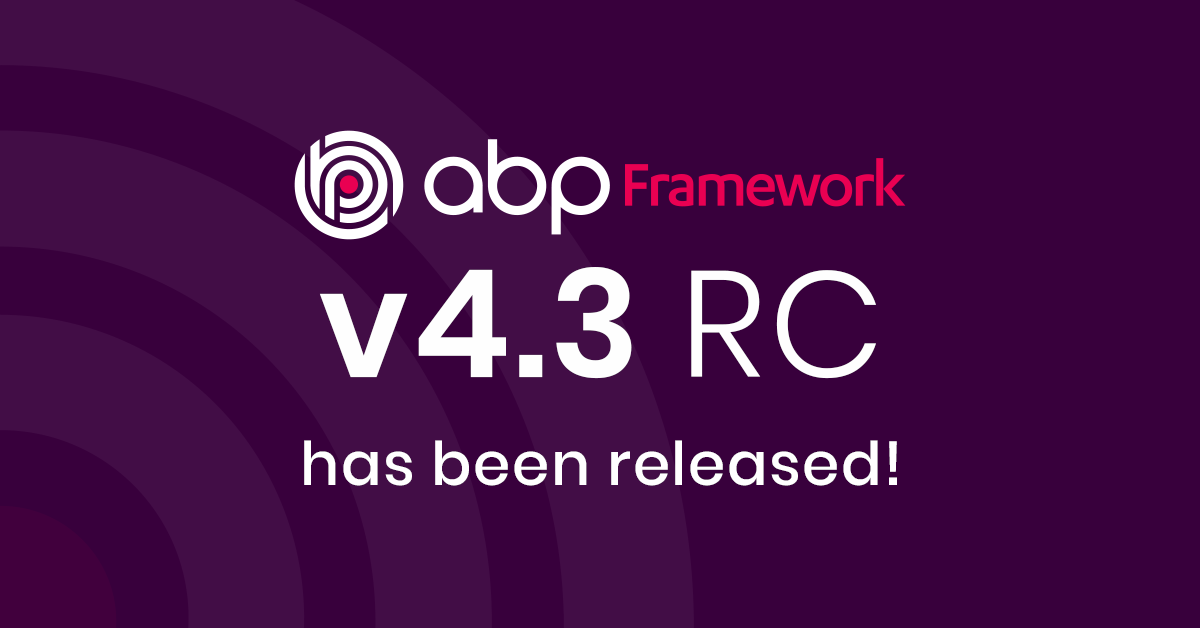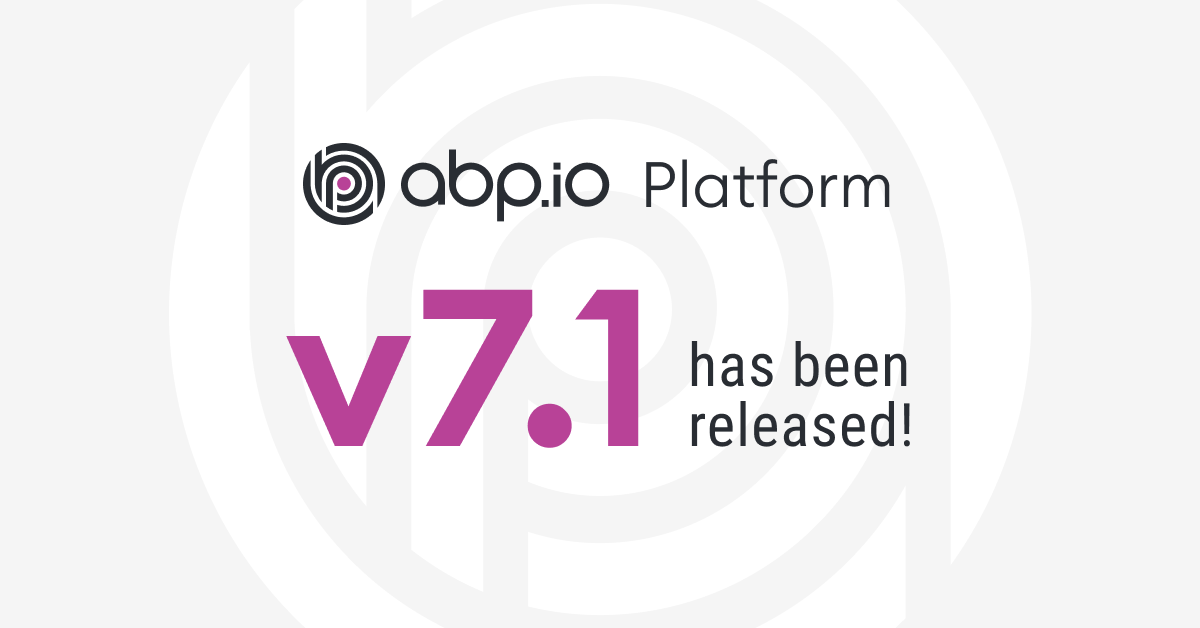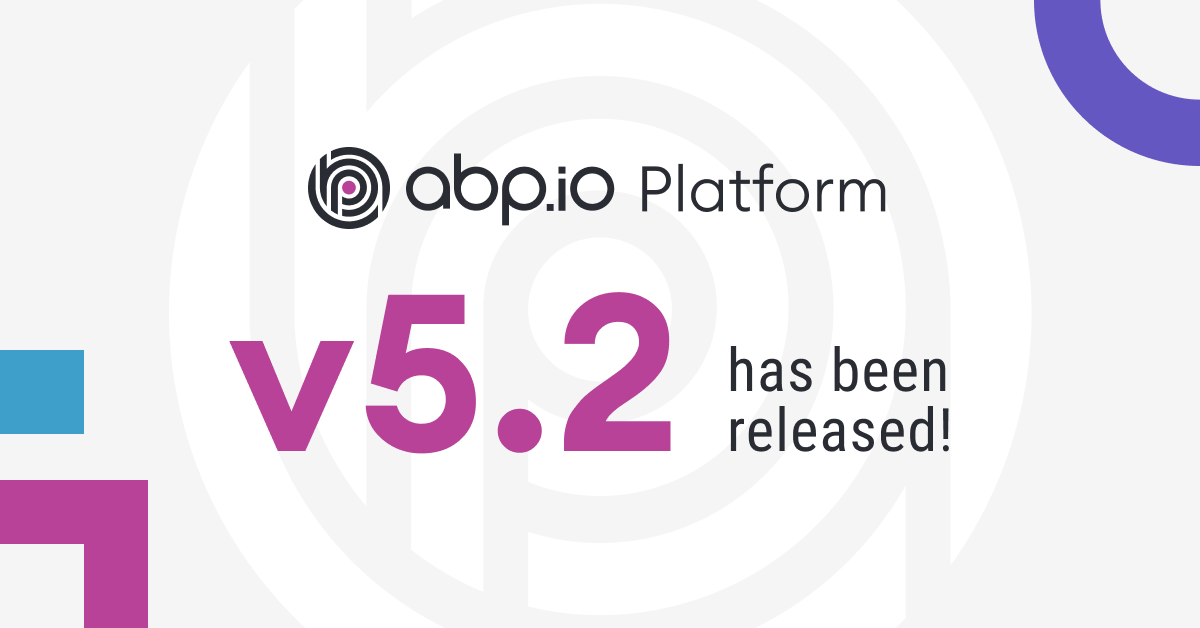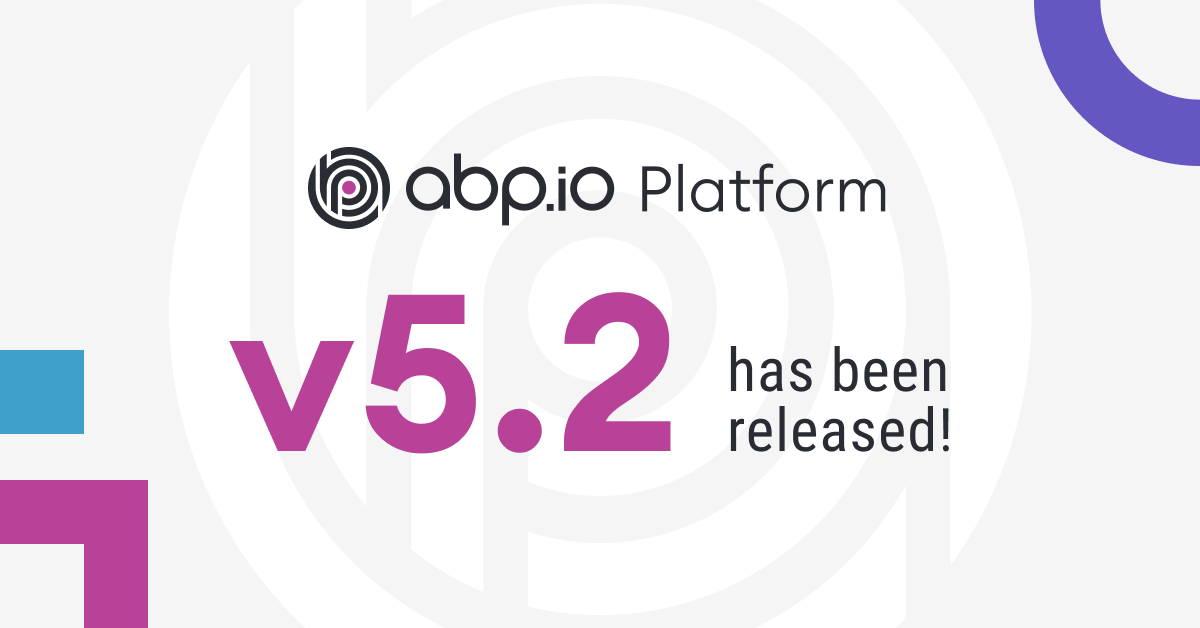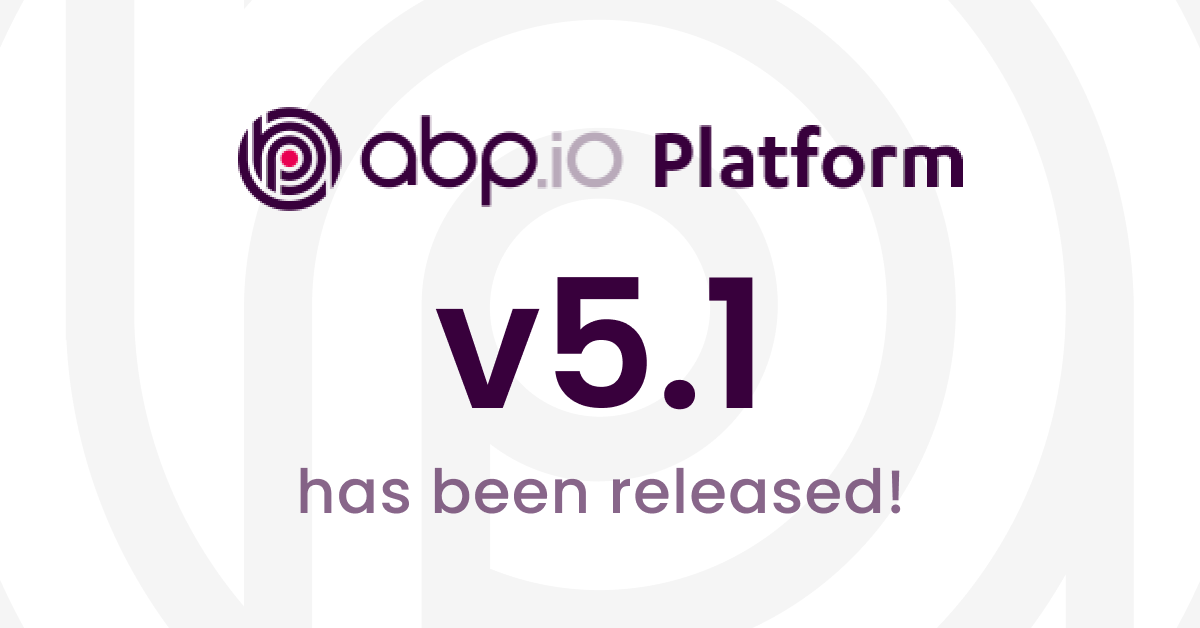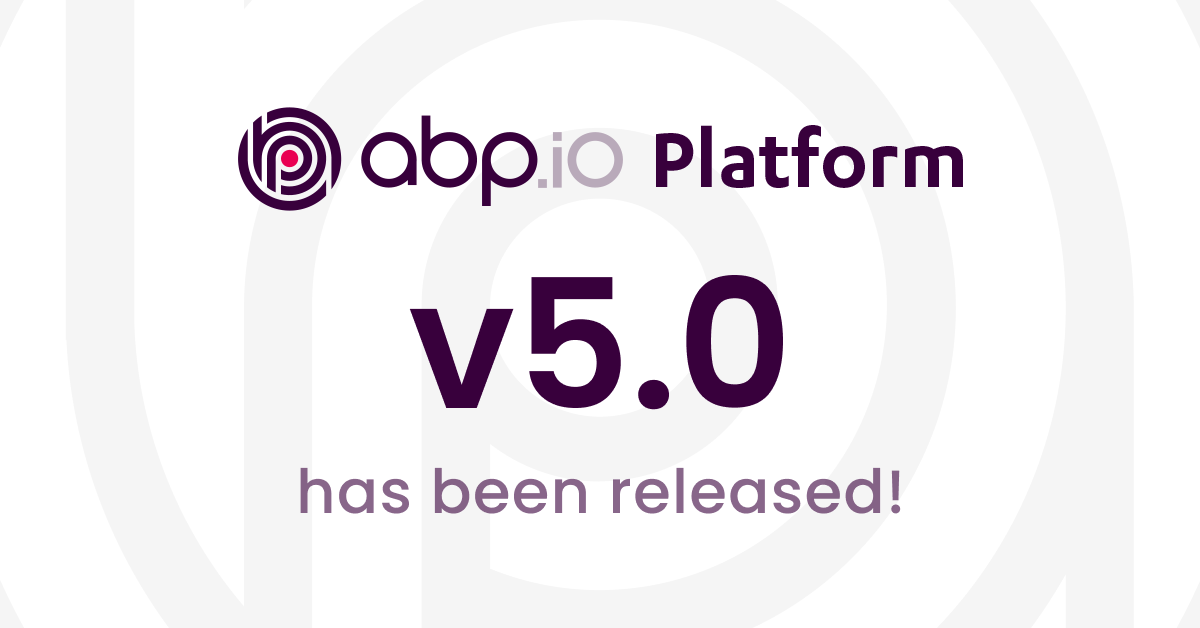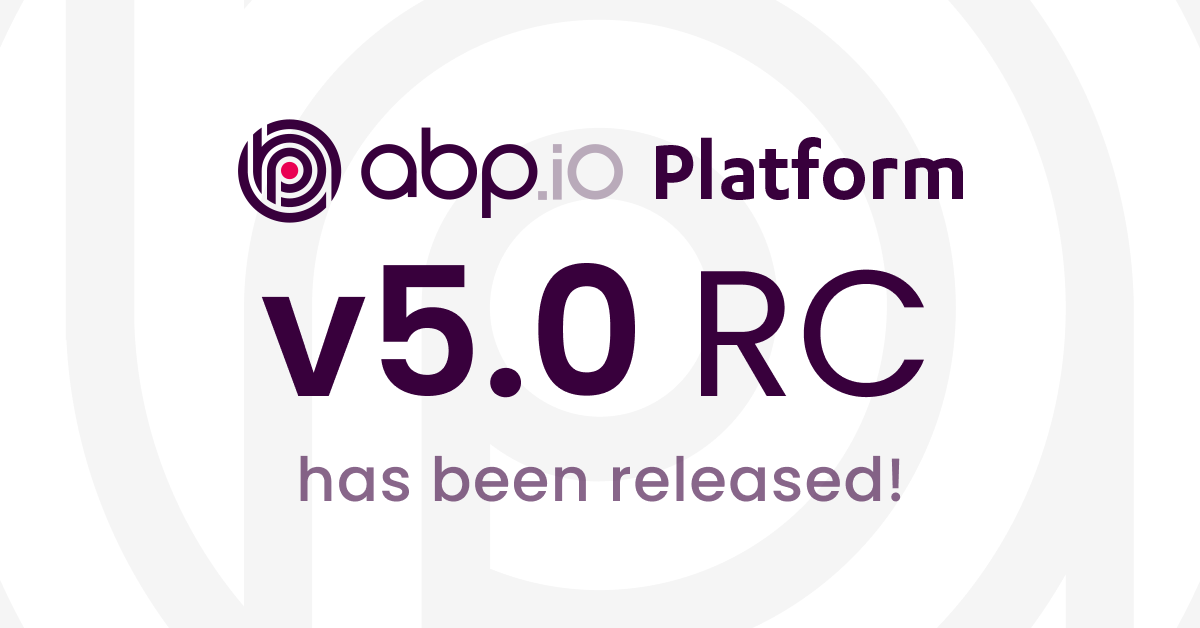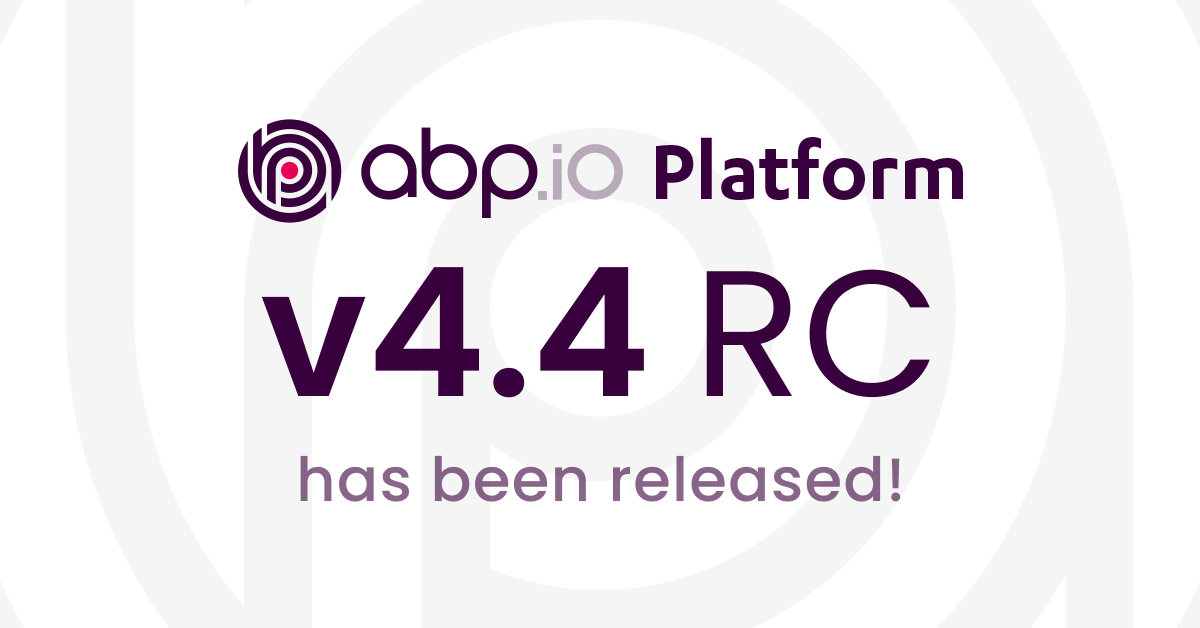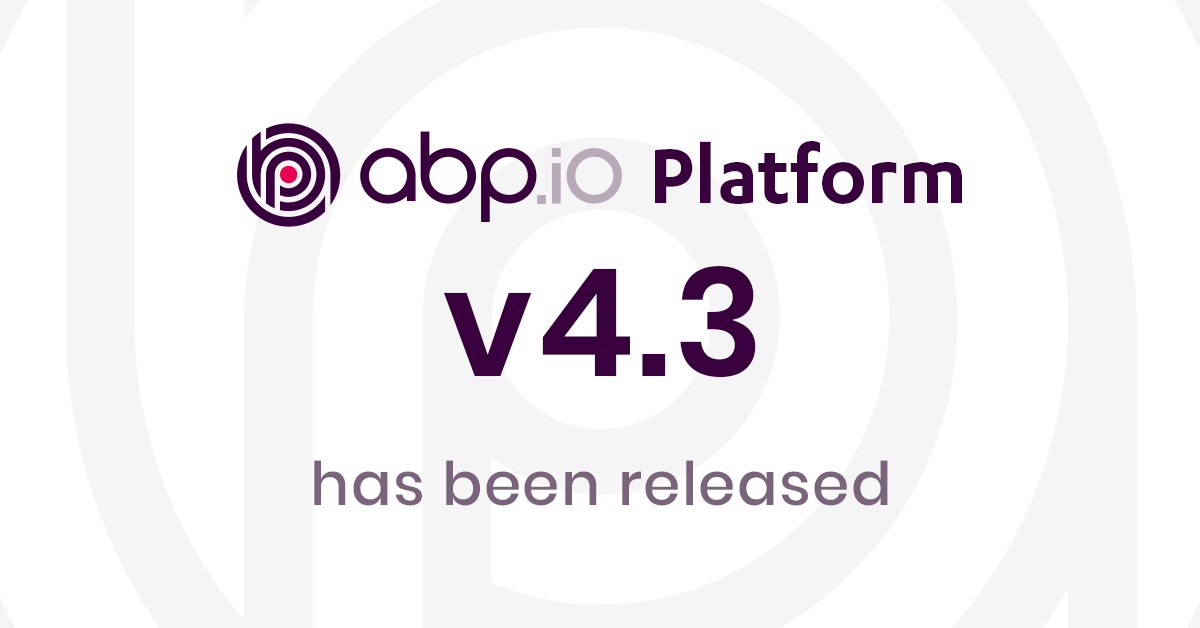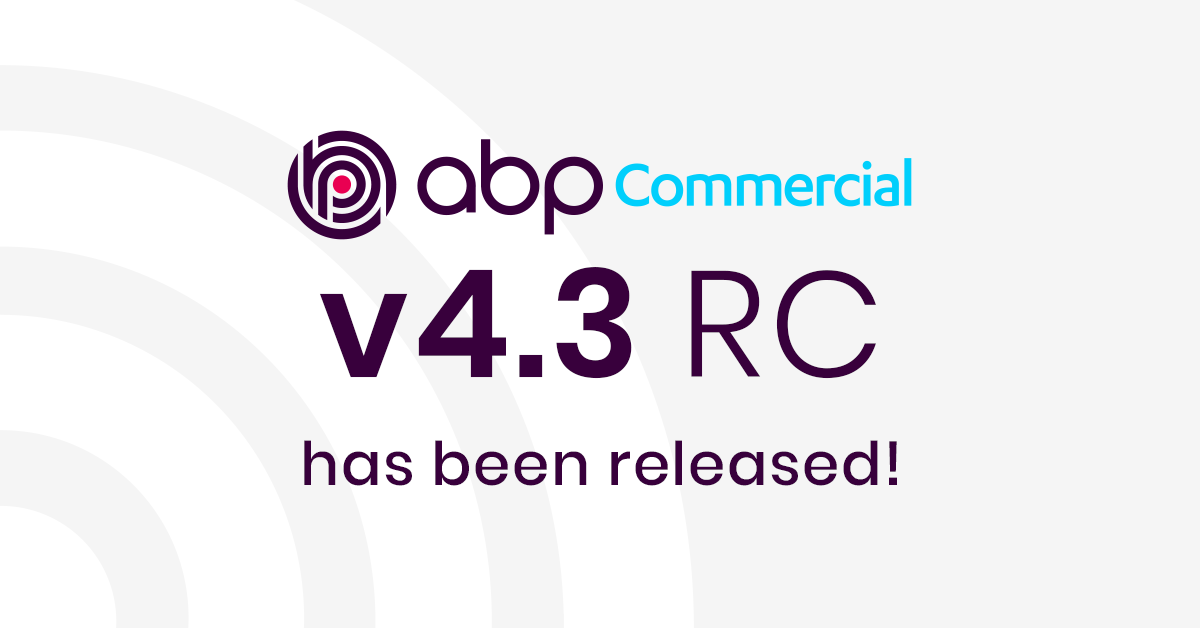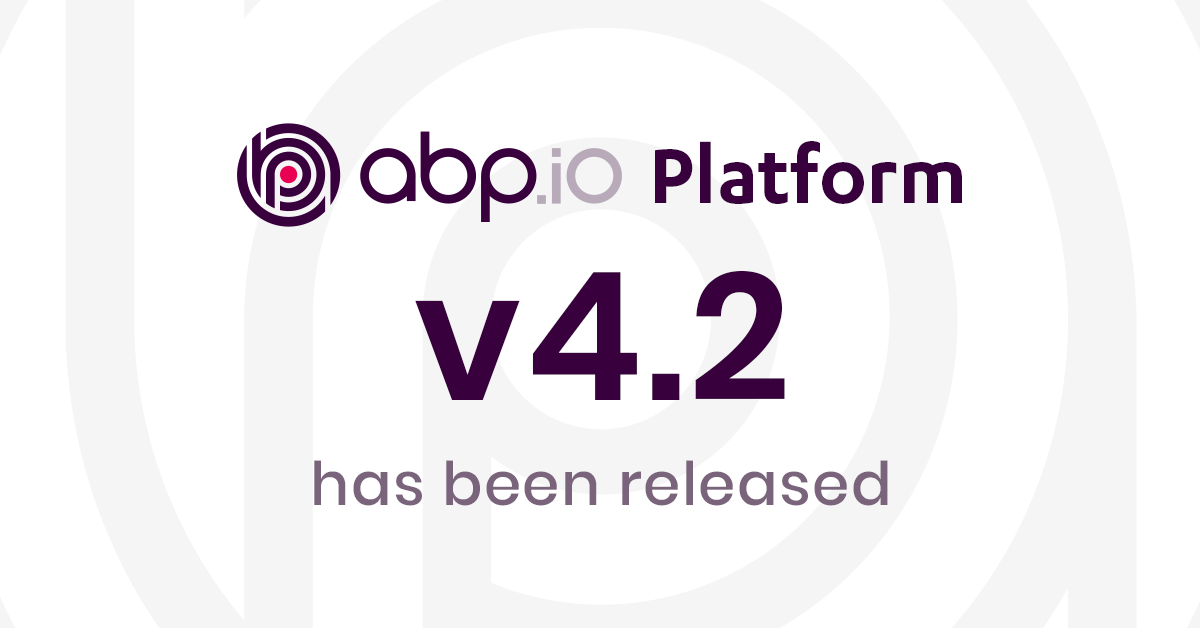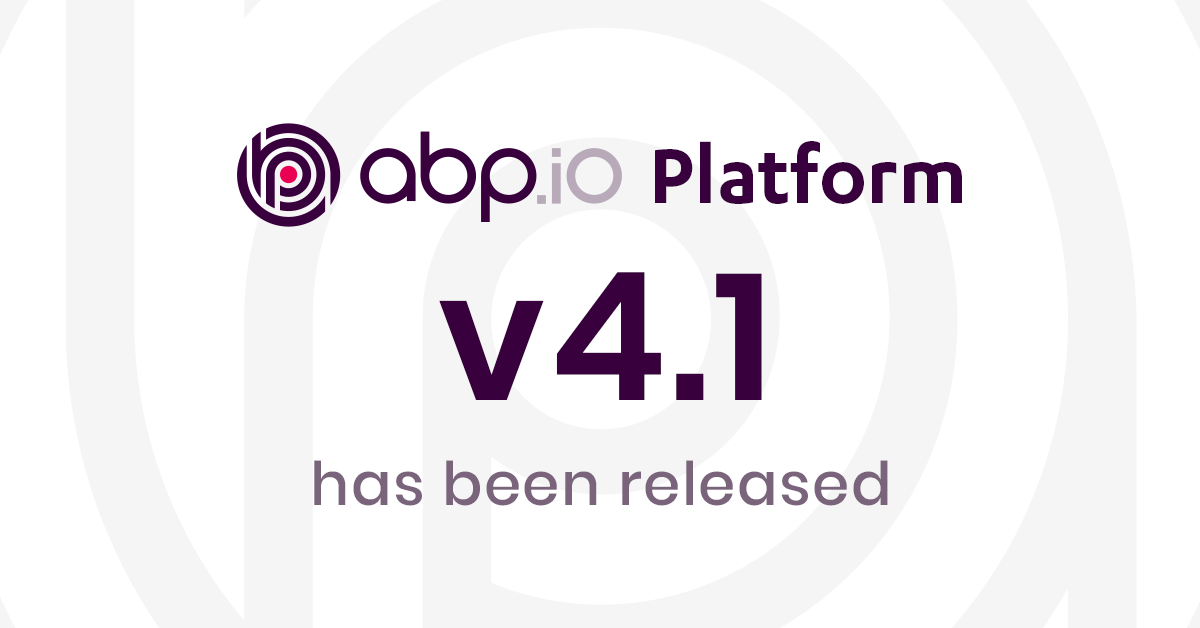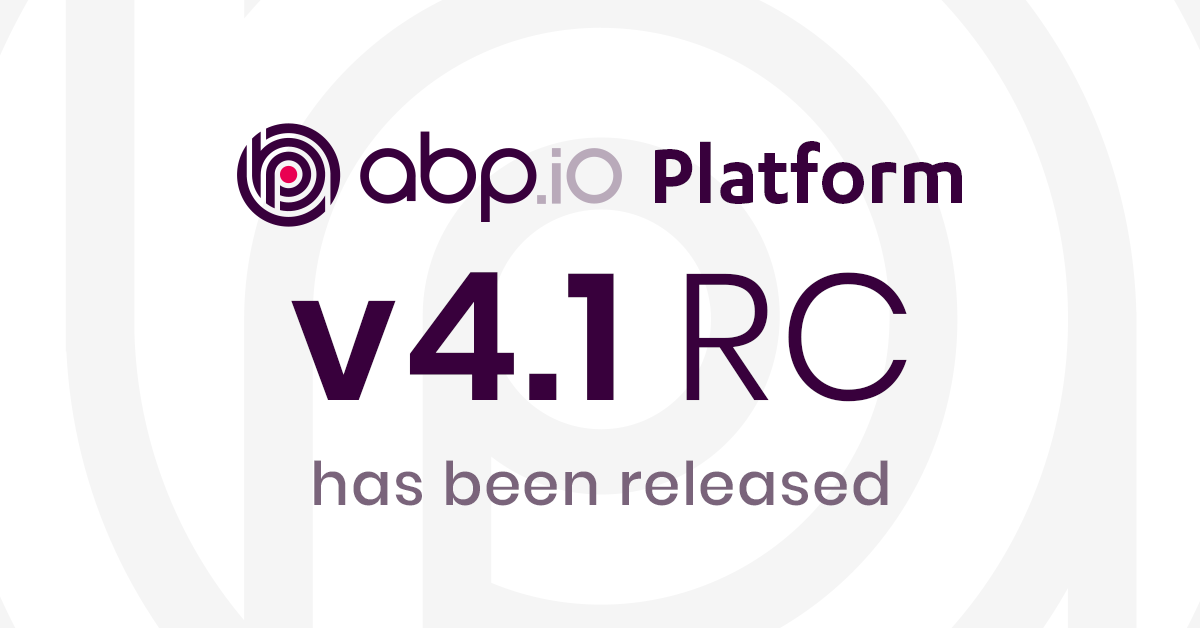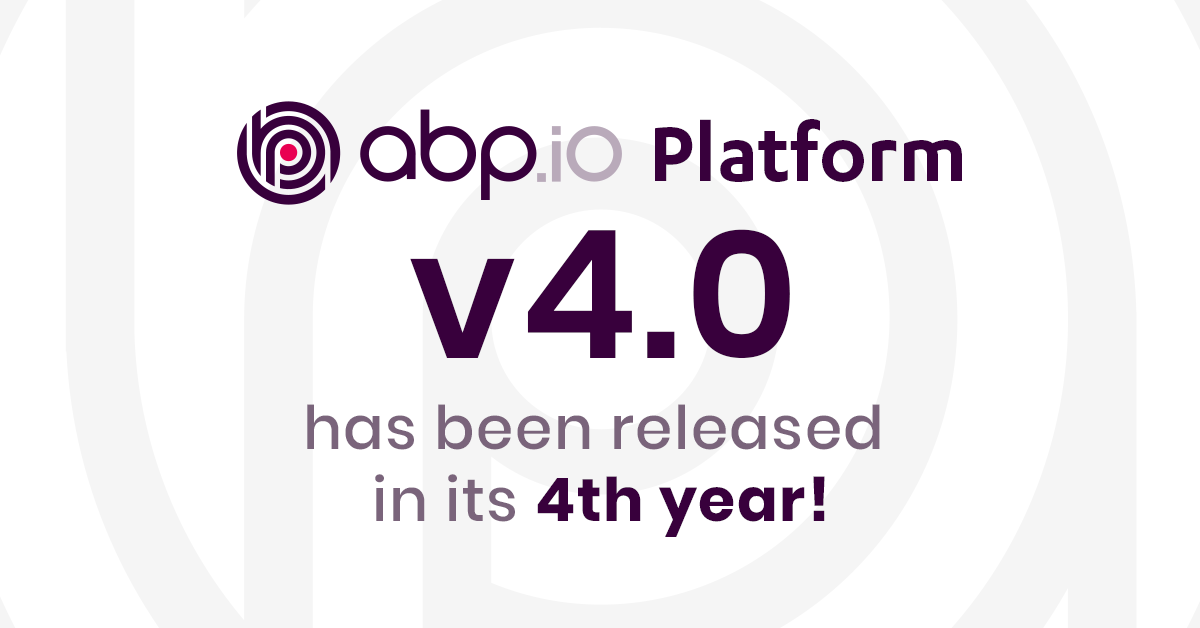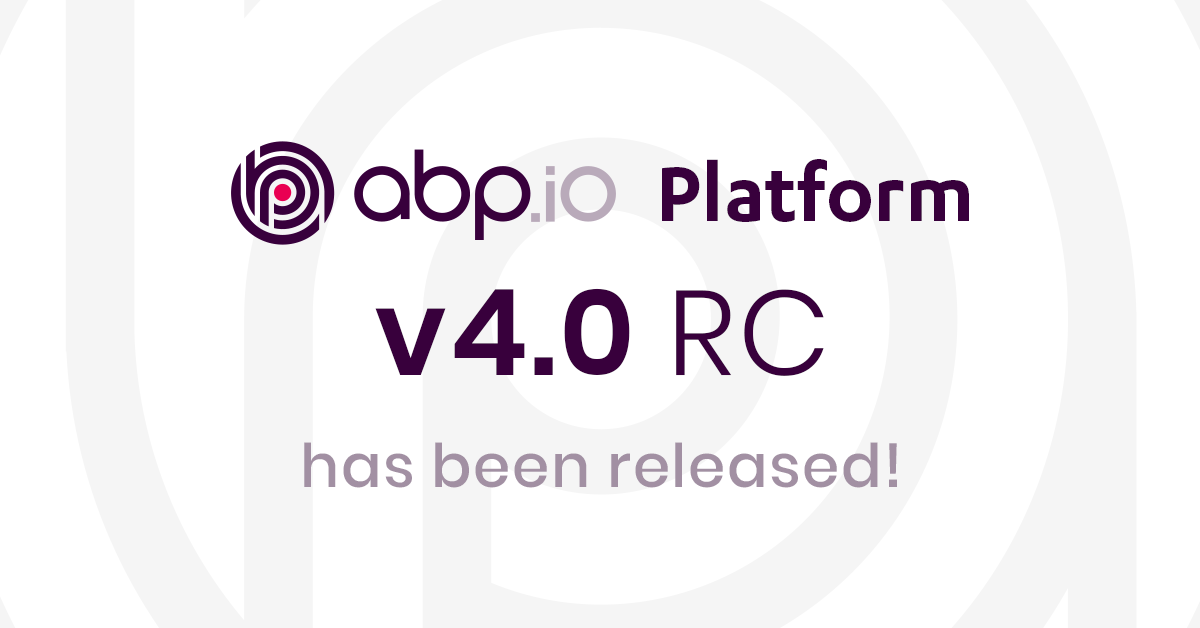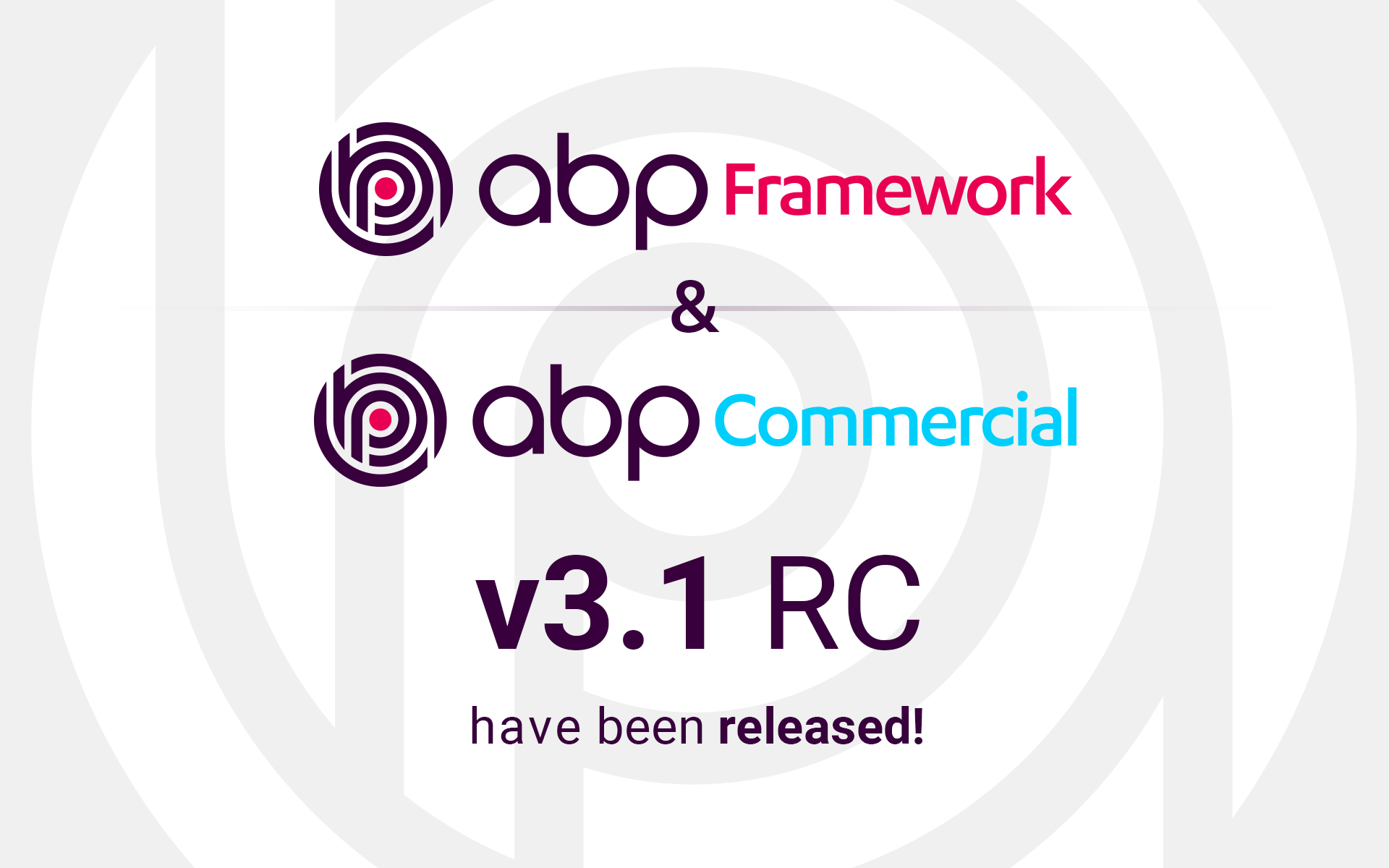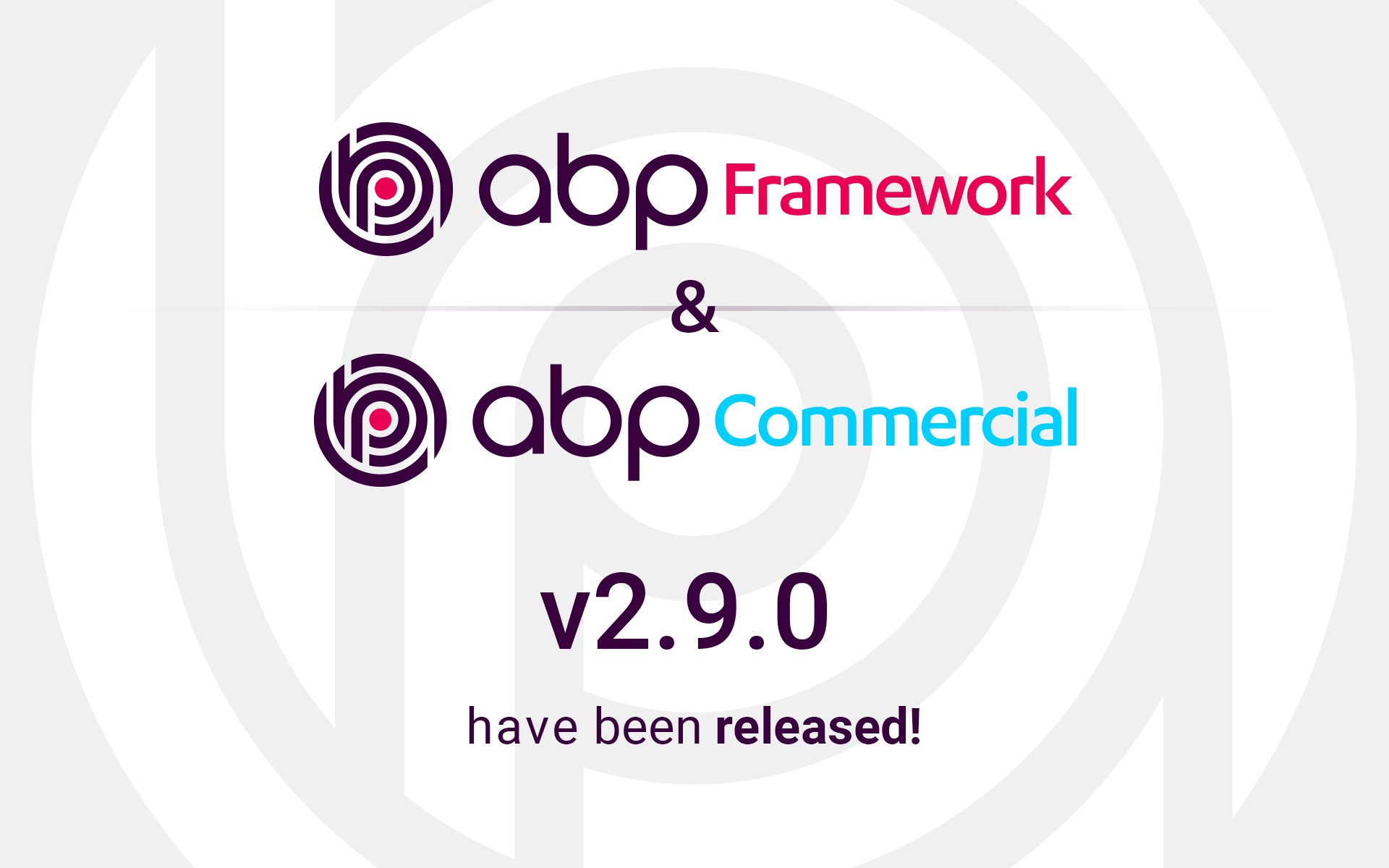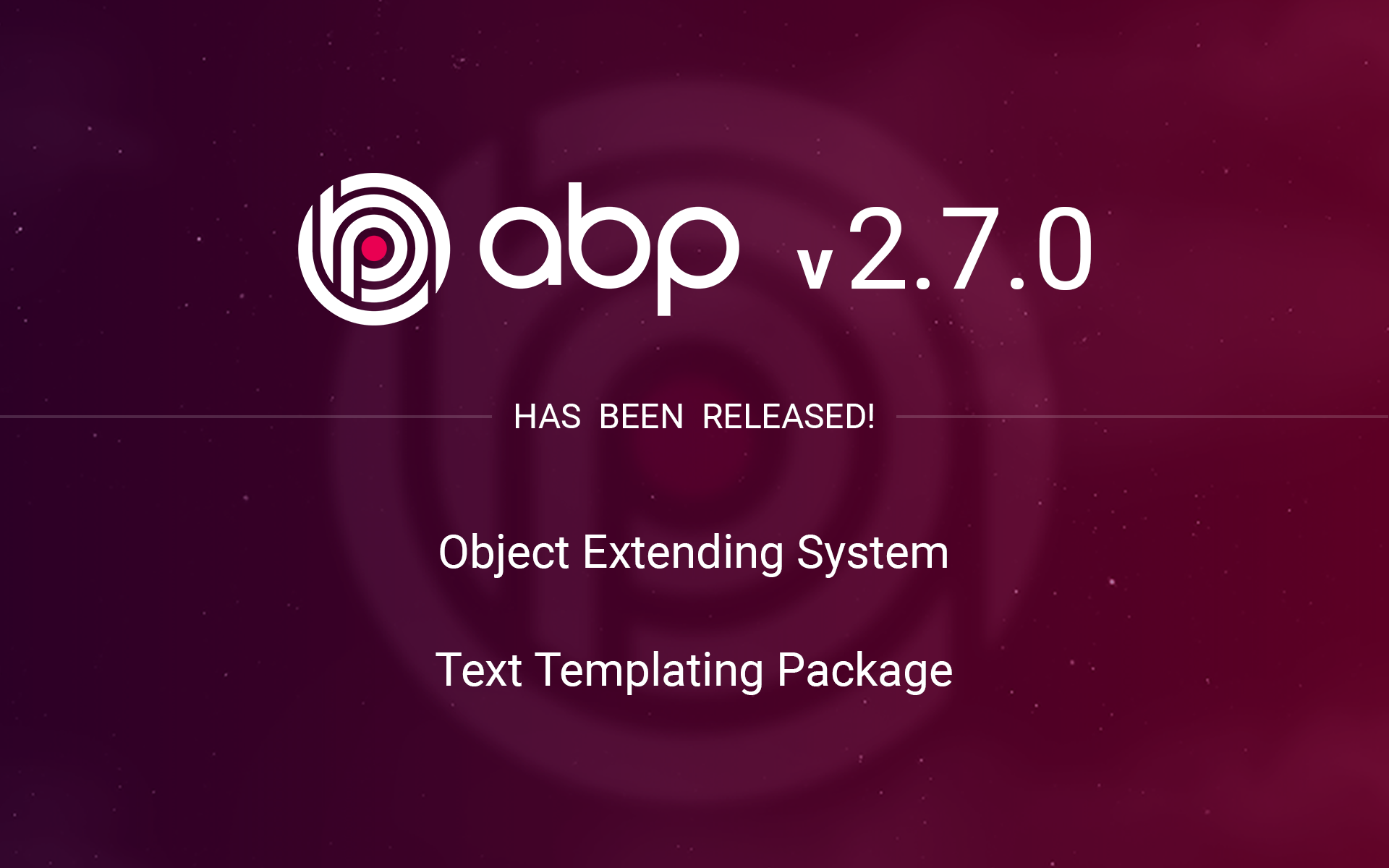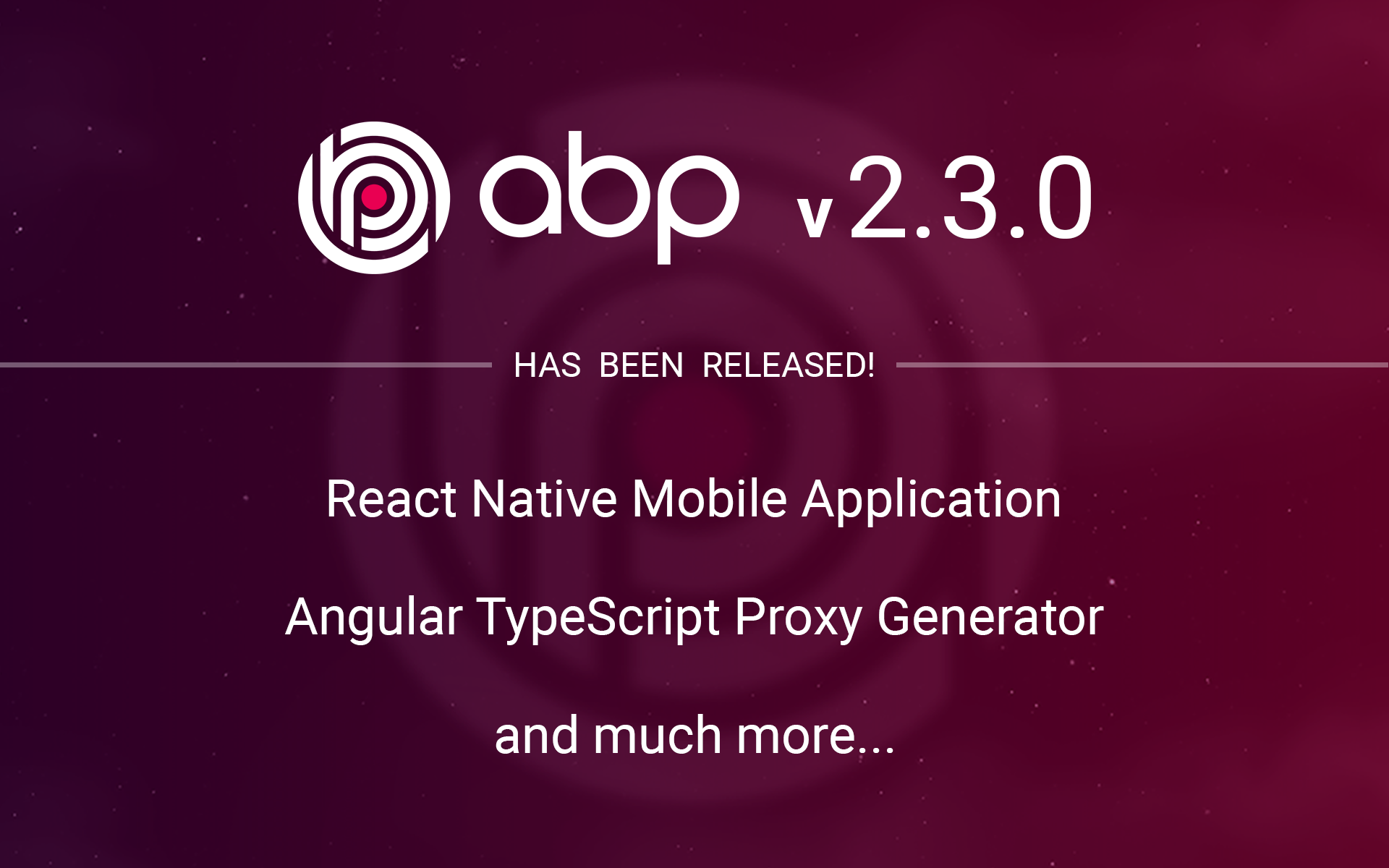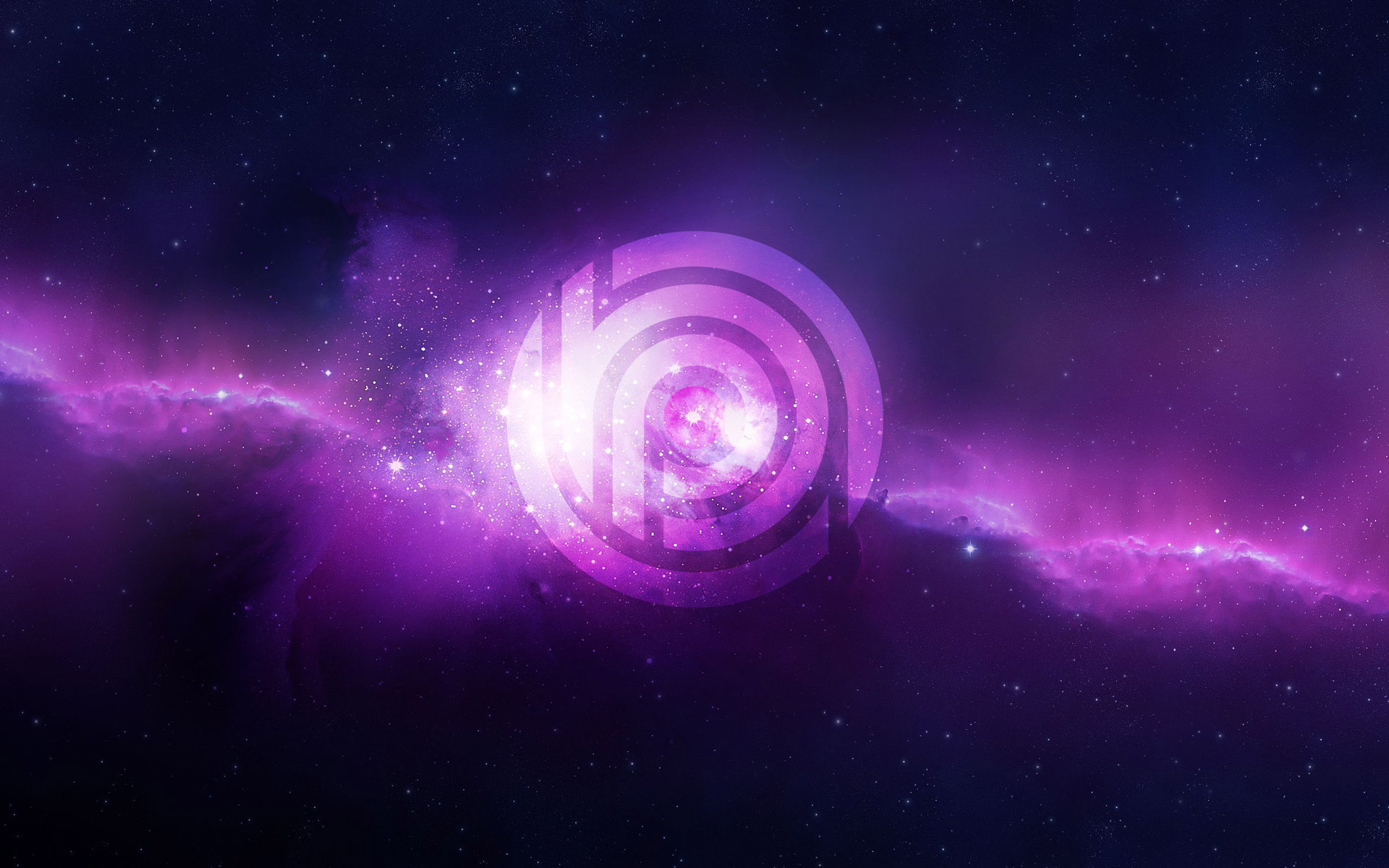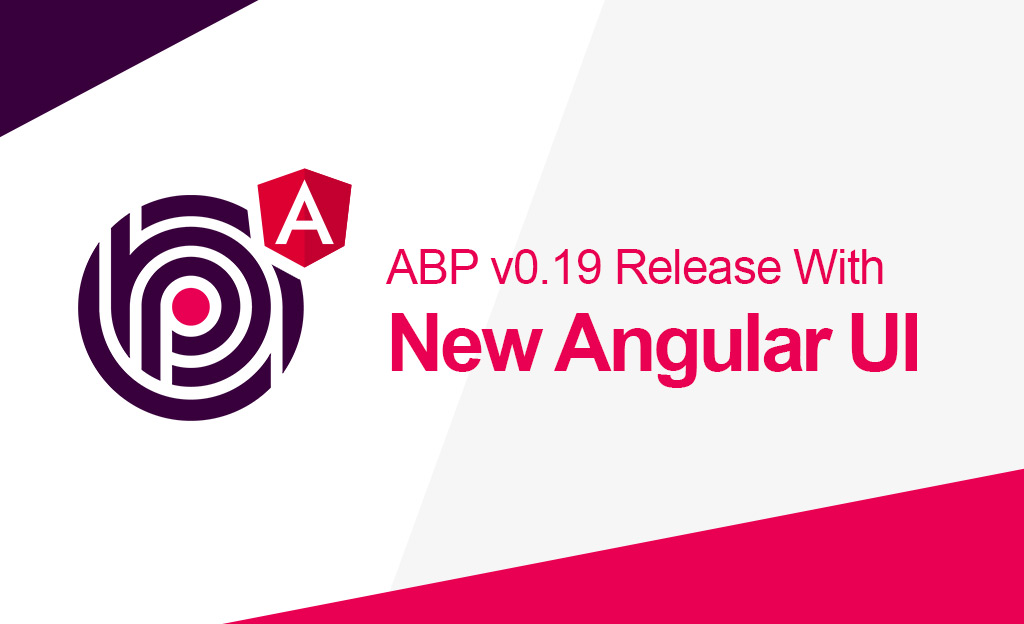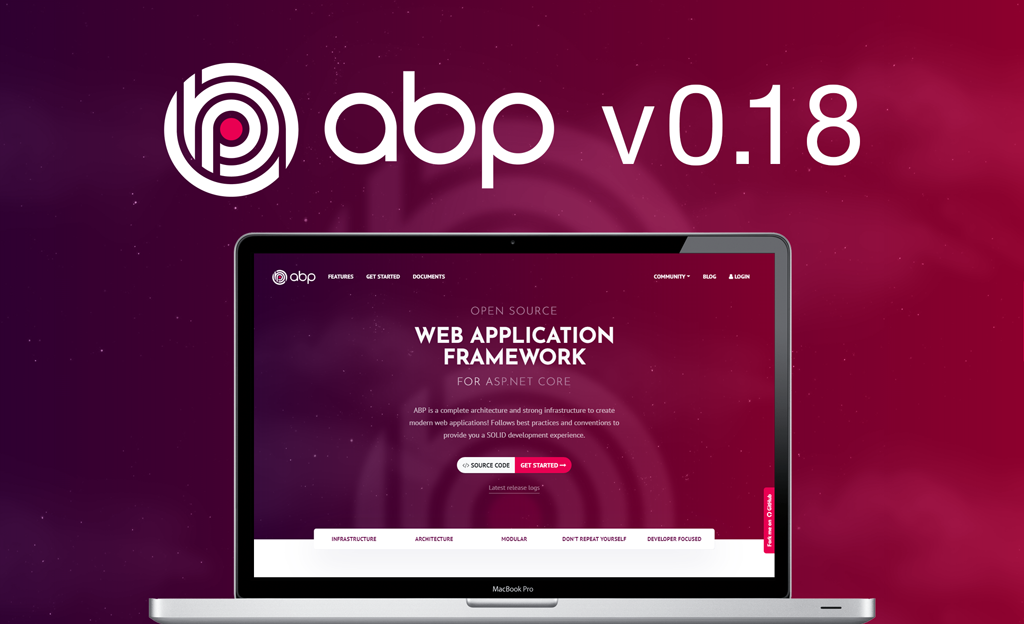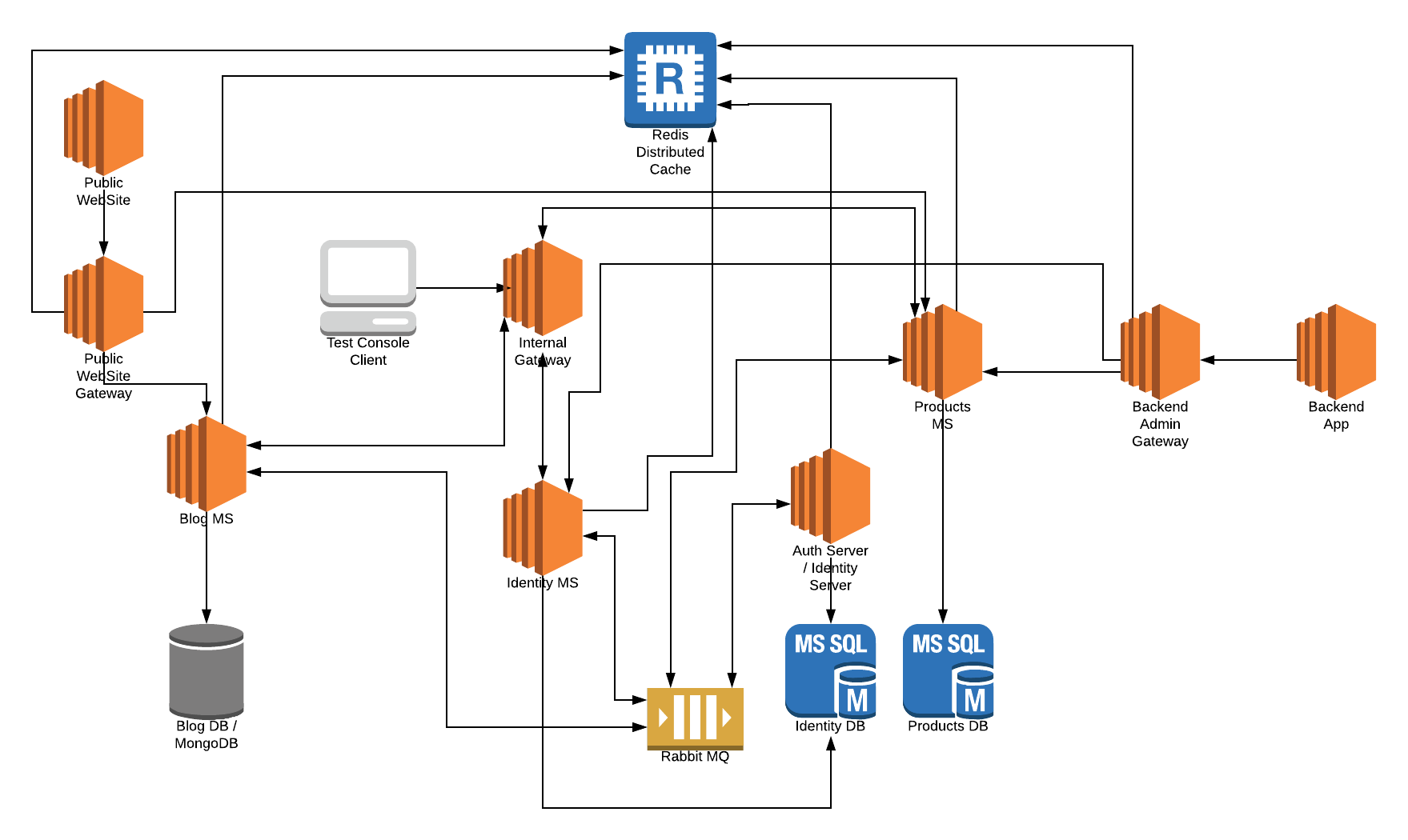Notice that the version 4.3.0 stable has already been released. We've updated the version usages in this post.
We are super excited to announce the ABP Framework 4.3 RC (Release Candidate). Here, a list of highlights of this release;
- CMS Kit module initial release.
- Blazor UI server-side support.
- Module extensibility system for the Blazor UI.
- Angular UI resource owner password flow comes back.
- Volo.Abp.EntityFrameworkCore.Oracle package is now compatible with .NET 5.
- CLI support to easily add the Basic Theme into the solution.
- New IInitLogger service to write logs before dependency injection phase completed.
Besides the new features above, we've done many performance improvements, enhancements and bug fixes on the current features. See the 4.3 milestone on GitHub for all changes made on this version.
This version was a big development journey for us; ~160 issues resolved, ~300 PRs merged and ~1,700 commits done only in the main framework repository. Thanks to the ABP Framework team and all the contributors.
ABP Commercial 4.3 RC has also been published. We will write a separate blog post for it.
The Migration Guide
We normally don't make breaking changes in feature versions. However, this version has some small breaking changes mostly related to Blazor UI WebAssembly & Server separation. Please check the migration guide while upgrading to version 4.3.
Known Issues
Some minor issues will be fixed in the stable release. You can see the known issues here.
Get Started With The 4.3
If you want to try version 4.3 today, follow the steps below;
- Upgrade the ABP CLI to the version
4.3.0using a command-line terminal:
dotnet tool update Volo.Abp.Cli -g --version 4.3.0
or install if you haven't installed before:
dotnet tool install Volo.Abp.Cli -g --version 4.3.0
- Create a new application with the
--previewoption:
abp new BookStore --preview
See the ABP CLI documentation for all the available options.
You can also use the Direct Download tab on the Get Started page by selecting the Preview checkbox.
Quick Start Tutorial
If you are new to ABP Framework, we've prepared a new quick start tutorial that can be pretty helpful to warm up to the ABP Framework.
What's New With The ABP Framework 4.3
CMS Kit
CMS (Content Management System) Kit was a module we worked on for the last couple of months. It is usable now, and we are releasing the initial version with this release. We are considering this module as pre-mature. It will be improved in the next versions. The goal to provide a flexible and extensible CMS infrastructure to .NET community. It currently has the following features;
- Pages: Used to create UI pages with a Markdown + WYSIWYG editor. Once you create a page, it becomes available via URL like
/pages/my-page-url. - Blog: A built-in blog system that supports multiple blogs with blog posts.
- Comments: Allows users to write comments under contents. It is used for blog posts.
- Tags: To add tag feature to any content/entity. It is used for blog posts.
- Reactions: Allows users to react to content via emojis, like a smile, upvote, downvote, etc.
- Rating: This component is used to rate content by users.
All features are separately usable. For example, you can create an image gallery and reuse the Comments and Tags features for the images. You can enable/disable features individually using the Global Features System.
We will create a separate blog post for the CMS Kit module, so I keep it short.
Blazor Server Side
We'd implemented Blazor WebAssembly before. With version 4.3, we have the Blazor Server-Side option too. All the current functionalities are available to the Blazor Server.
You can select Blazor Server as the UI type while creating a new solution.
Example:
abp new Acme.BookStore -u blazor-server
If you write blazor as the UI type, it will create Blazor WebAssembly just as before.
You can also select the Blazor Server on the get started page.
Blazor Server applications are mixed applications; You can mix the server-side MVC / Razor Pages with the Blazor SPA. This brings an interesting opportunity: MVC / Razor Pages modules can work seamlessly in the Blazor Server applications. For example, the CMS Kit module has no Blazor UI yet, but you can use its MVC UI inside your Blazor Server application.
Blazor Server UI has a
--tieredoption just like the MVC / Razor Pages UI. This can be used to separate the HTTP API server from the UI server (UI application doesn't directly connect to the database).
Blazor UI Module Extensibility
Module Entity Extensions and some other extensibility features was not supported by the Blazor UI. With this version, we've implemented that system for Blazor UI.
For anyone wondering what the module entity extensions is, please check the document or this community video.
Email Setting Management UI
With this release, a new item is added to the main menu to navigate to the setting management page. This page contains the email setting management UI, as shown below:
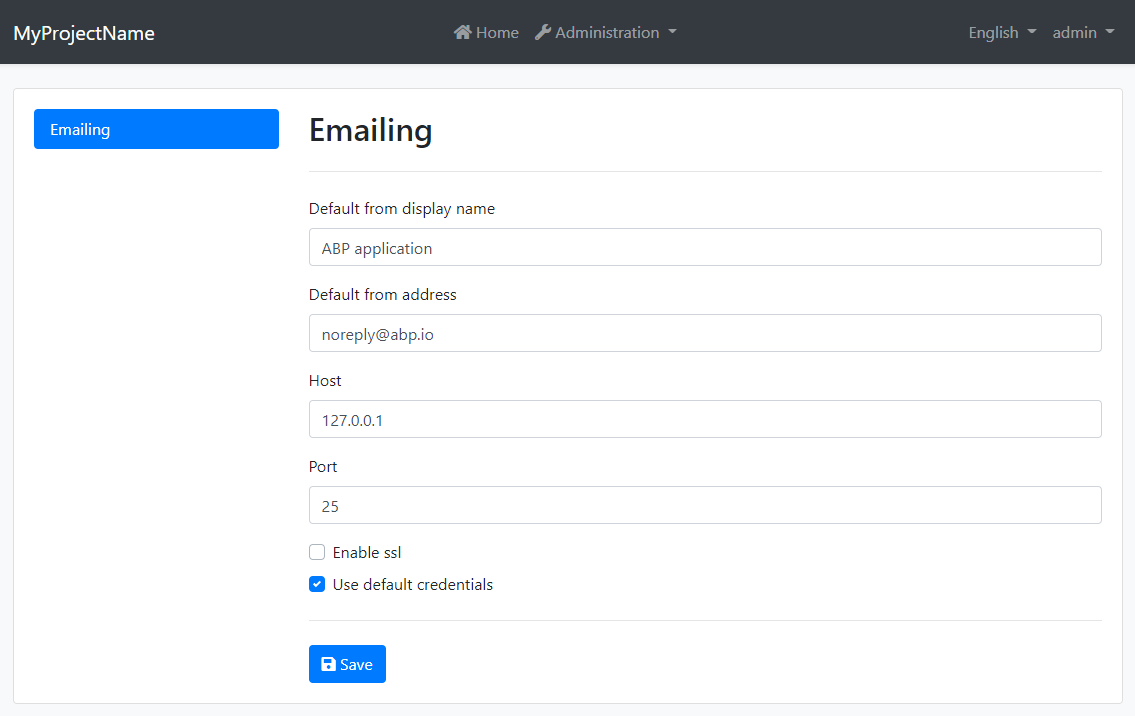
The setting page is provided by the setting management module, and it is extensible; You can add your tabs to this page for your application settings.
Angular UI Resource Owner Password Flow
The login page was removed from the Angular UI in previous versions because Authorization Code flow is the recommended approach for SPAs. However, it requires redirecting the user to the authentication server, logging there, and returning to the application. We got a lot of feedback because this brings overhead for simple applications.
With version 4.3, Angular UI can use its login page with resource owner password flow. Please refer to the documentation to learn how to make it work.
Volo.Abp.EntityFrameworkCore.Oracle Package
We couldn't update the Oracle.EntityFrameworkCore package on .NET 5.0 upgrade since it was not supporting .NET 5.0 at that time. Now, it supports .NET 5.0 and we've upgraded the package.
See the documentation to learn how to switch to this package for the Oracle database.
Add Basic Theme Into Your Solution
ABP Framework provides a strong theming system. However, the default theme, named the Basic Theme, has a non-styled, base Bootstrap UI. It is expected that you override the styles and UI components of that theme in a serious application.
There are some articles (see for mvc & blazor) to explain how to include the Basic Theme's source code into your solution to modify it fully. However, it still requires some manual work.
With this version, ABP CLI providing a command to add the Basic Theme's source code into your solution. Run the following command in a command-line terminal inside the root directory of your solution:
MVC UI
abp add-package Volo.Abp.AspNetCore.Mvc.UI.Theme.Basic --with-source-code --add-to-solution-file
Blazor Web Assembly UI
abp add-package Volo.Abp.AspNetCore.Components.WebAssembly.BasicTheme --with-source-code --add-to-solution-file
abp add-package Volo.Abp.AspNetCore.Components.Web.BasicTheme --with-source-code --add-to-solution-file
Blazor Server UI
abp add-package Volo.Abp.AspNetCore.Components.Server.BasicTheme --with-source-code --add-to-solution-file
abp add-package Volo.Abp.AspNetCore.Components.Web.BasicTheme --with-source-code --add-to-solution-file
As you see, Blazor UI developers should add two packages. The Basic Theme consists of two packages for the Blazor UI: one for wasm/server and one shared.
Angular UI
Execute the following command in a terminal inside the angular folder of your solution:
abp add-package @abp/ng.theme.basic --with-source-code
IInitLogger
In ASP.NET Core, logging is not possible before the dependency injection phase is completed. For example, you can't write log in ConfigureServices method. However, we sometimes need to write logs in this stage.
We are introducing the IInitLogger service, which allows writing logs inside the ConfigureServices method.
Example:
public class MyModule : AbpModule
{
public override void ConfigureServices(ServiceConfigurationContext context)
{
var logger = context.Services.GetInitLogger<MyModule>();
logger.LogInformation("Some log...");
}
}
Logs are written once the service registration phase is completed. It stores the written logs in memory and then writes logs to the actual ILogger when ready.
Notice: Startup templates come with Serilog pre-installed. So, you can write logs everywhere by directly using its static API (ex:
Log.Information("...");). TheInitLoggeris a way to write pre-initialization logs without depending on a particular logging library. So, it makes it very handy to write logs inside reusable modules.
Other Features/Changes
- #7423 MongoDB repository base aggregation API.
- #8163 Ignoring given files on minification for MVC UI.
- #7799 Added
RequiredPermissionNametoApplicationMenuItemfor MVC & Blazor UI to easily show/hide menu items based on user permissions. Also addedRequiredPermissionNametoToolbarItemfor the MVC UI for the same purpose. - #7523 Add more bundle methods to the distributed cache.
- #8013 Handle
JsonPropertyattribute on Angular proxy generation.
See the 4.3 milestone on GitHub for all changes made on this version.
Feedback
Please check out the ABP Framework 4.3 RC and provide feedback to help us release a more stable version. The planned release date for the 4.3.0 final version is April 21, 2021.
